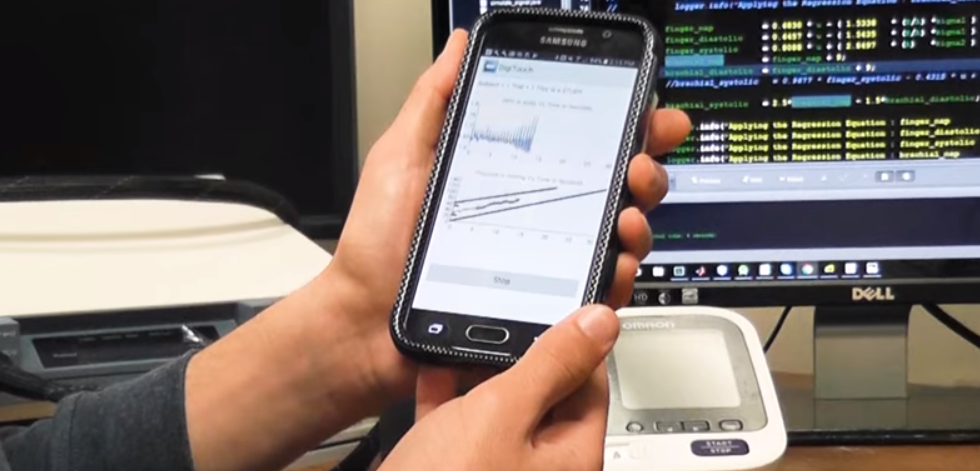Smartphone case reads blood pressure with the touch of a finger


US researchers have developed a prototype smartphone case that monitors blood pressure and could potentially offer a more accessible method of risk assessment for heart attack and strokes.
According to the researchers' findings published in Science Translational Medicine, the case uses 3D-printing technology embedded with an optical sensor, which measures blood pressure in the artery of a finger once force is applied.
The phone measures pressure applied and the "resulting variable-amplitude blood volume oscillations", the journal said. The smartphone runs the data to an accompanying app that provides visual feedback and computes blood pressure from the measurements.
The process is the same as the way a blood pressure cuff squeezes an artery in the arm, according to the journal researchers. Early trial results published in the journal showed that blood pressure readings were similar between results garnered from the new tech, a standard arm cuff device, and a finger cuff device when used on a group of 30 participants.
About 90 percent of participants were able to position their finger correctly and get consistent readings after one or two attempts, it added.
"The device yielded bias and precision errors of 3.3 and 8.8 mmHg [millimetre of mercury] for systolic BP [blood pressure] and -5.6 and 7.7 mmHg for diastolic BP over a 40 to 50 mmHg range of BP," the paper reads. "These errors were comparable to the finger cuff device."
Other players in the field are using tech for more accessible healthcare. At last month's Mobile World Congress (MWC), Samsung launched a research app for smartphone users to monitor their daily stress levels to go with the new Samsung Galaxy 9 and Galaxy 9 Plus, which include improved biometric scanning.
Also revealed last month, Stethee's digital stethoscope sends amplified heartbeat sounds to a companion app that automatically detects potential deviations in real time; while researchers at the Australian Research Centre of Excellence for Nanoscale BioPhotonics developed a 3D-printable "clip-on" that turns a smartphone into a fully functional microscope, which could be put to use to determine water quality, to analyse blood samples for parasites, or for early disease detection.
Epic Health last year revealed its app for iOS and Android that checks for blood sugar levels when a user places one fingertip over the camera lens of their smartphone. A series of close-up images are taken that are sent to the cloud for analysis and give feedback on various vital signs from heart rate, temperature, and blood pressure.
At last year's CES, Chinese firm Changhong unveiled its smartphone with an inbuilt material sensor to let its owner scan and analyse the chemical makeup of almost any object.
The H2 smartphone taps into material-sensor technology from Consumer Physics, which first launched its SCiO standalone handheld molecular scanner in 2014.
With AAP
PREVIOUS AND RELATED COVERAGE
Nuance lands a major partner in the health care sector
The speech recognition business is partnering with Epic to launch a series of virtual assistants tailored for health care professionals.
Lyft expands its footprint in health care
The ride-hailing company, in competition with Uber to partner with health care organizations, is promising to have a real impact on the health care sector.
HP is aiming to democratize additive manufacturing with a fast prototyping system that runs on the same platform and materials as its production-ready 3D printers.
Sony's Xperia XZ2 smartphone adds 3D scanning capabilities
The Sony Xperia XZ2 comes with 3D scanning capabilities on its front-facing camera, S-Force surround sound, Bravia screen tech, and a dynamic vibration system adapted from its PlayStation controllers.
5 ways technology will change the future of healthcare(TechRepublic)
The healthcare industry is in a state of flux. Mike Strazzella, a federal government healthcare attorney, shares his expectations for how technology and new regulations will shape the future of care.